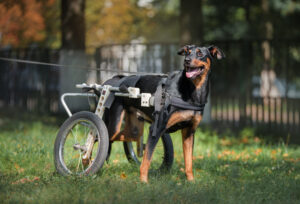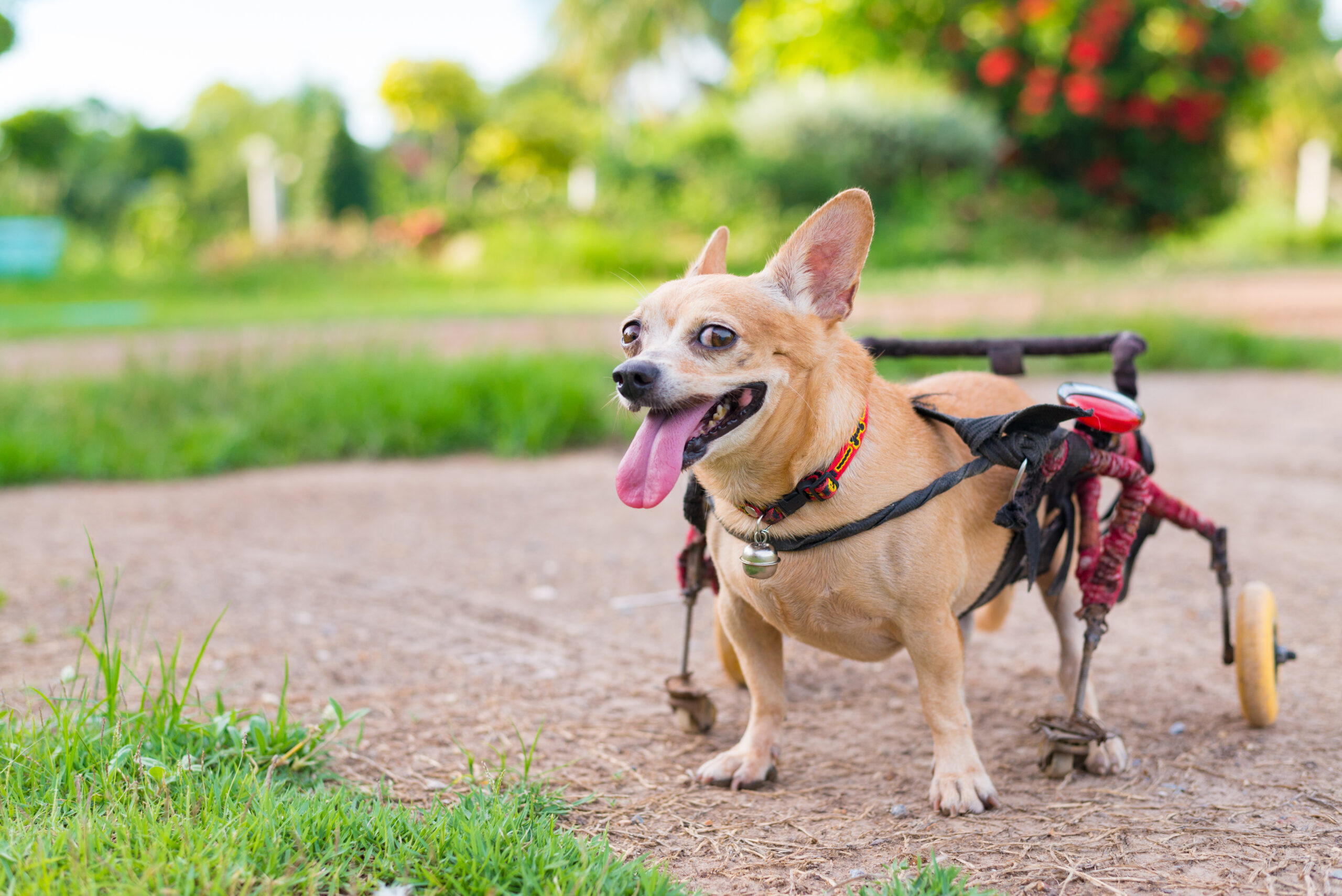Old age can be tough not only for humans but for dogs as well. As your beloved pooch grows older, there will be a myriad of pains here and there that could change the temperament of your beloved pet. So, you may find your older dog starting to be more sedentary and inactive.
If your dog is over seven years old and you see subtle changes to the responsiveness and demeanor of your pet, you may need to consult your vet to determine the things your dog needs to make their twilight years comfortable and happy. For instance, even if the occasional massage could temporarily ease the pain, perhaps it’s time to use a wheelchair to boost your pet’s freedom of movement and provide lasting relief on hind limbs.
However, old age isn’t the sole reason why your beloved canine might require the use of a wheelchair. Below are seven common conditions a dog wheelchair can help manage:
Post-surgery Recovery
Pain management for dogs usually involves painkillers and requires plenty of rest. Sometimes, pain management can also include regular massage therapy. However, more severe injuries, such as knee and ACL damage, typically require longer recovery and rehabilitation.
To ensure proper healing in the area where surgery was performed on your pet, your vet may recommend a dog wheelchair. This will aid take the weight off from the affected area and prevent dogs from overcompensating and adding unnecessary pressure to other parts of their body.
Degenerative Joint Disease
Degenerative joint disease, more commonly known as osteoarthritis, is a condition that affects both dogs and humans. Since your pawed friends cannot use words to tell you they’re in pain, you need to be more observant to see signs of arthritis in dogs. So, suppose your dog is getting more sluggish, showing posture and gait changes, as well as getting a bit grumpier. In that case, you should consider the deterioration of joint cartilage as the reason behind the symptoms.
In humans, using a cane or wheelchair can be part of arthritis management. In dogs, using canes is out of the question, but a wheelchair may be very helpful in easing pain and bringing back mobility.
Hip Dysplasia

Happy big dog in wheelchair or cart walking in park
Hip dysplasia is a genetic disease more common in bigger dog breeds, such as Saint Bernard, German Shepherd, and Great Dane. However, it doesn’t mean this condition cannot happen in smaller dog breeds.
Dysplasia occurs when the ball and socket of the hip joint don’t develop or fit well. As a result, the joint could deteriorate faster and can cause extreme pain. Over time, pets with hip dysplasia could eventually lose the use of their hip joint.
Degenerative Myelopathy
Older pooches that drag their feet or display excessive wobbling in their gait may be suffering from a disease called degenerative myelopathy (DM). Typically, dogs around eight years old may show symptoms of DM, which is characterized by damage in the spinal cord and brain connection.
What’s sad about this condition is that it has no treatment. The best option you could take for your dog suffering from DM may be to use a wheelchair as it helps with stability and mobility.
Cerebellar Ataxia
Ataxia is an umbrella term to describe a condition affecting the nervous system. It results in the loss of coordination or movement. So, dogs that lose control of their mobility due to infections, congenital problems, spinal cord injuries, or brain tumors could be suffering from ataxia.
Head tilting, wobbling, and dragging of limbs are some of the most common symptoms. Managing the underlying cause of ataxia may require supplements, medications, and, sometimes, surgery. However, the more permanent conditions may call for the lifetime use of a wheelchair.
Paralysis
The most common causes of dog paralysis are old age and hereditary problems. However, there may be undiagnosed conditions, diseases, or traumas that may also lead to dog paralysis. Some other issues that may cause sudden, temporary, or permanent paralysis include bacterial infection, spinal column disorders, tick bites, and even stroke.
If not addressed early, a condition called intervertebral disc disease (IVDD) can cause limb paralysis or weakness, which can cause excruciating pain to your pet. But early diagnosis and rehabilitation with the use of wheelchairs may allow dogs to retain full use of their legs.
Loss Of Limb
Another condition that a wheelchair can help manage is amputation or loss of limb. Typically, pooches who have been born with missing limbs learn to compensate and move without any problems at all. But older dogs that get into situations requiring amputation may need a longer time to get accustomed to losing their limbs. For better recovery, amputated dogs may need to use wheelchairs while recuperating.
Final Thoughts
Dogs aren’t that different from humans, especially when it comes to conditions that cause mobility issues. For one, old age is a common culprit that requires wheelchairs in both canines and humans. As a dog owner, you need to be aware of how a dog wheelchair can help manage the different conditions affecting the mobility of your beloved pooch.
Love our content? Share it with a friend or link it to social media. Like short clips of cute household pets? Training tips? Follow us on instagram @nydognanny or on YouTube at nydognanny. Have some news you needs to get to dog and cat parents stat? Email info@newyorkdognanny.com with your article pitch.




